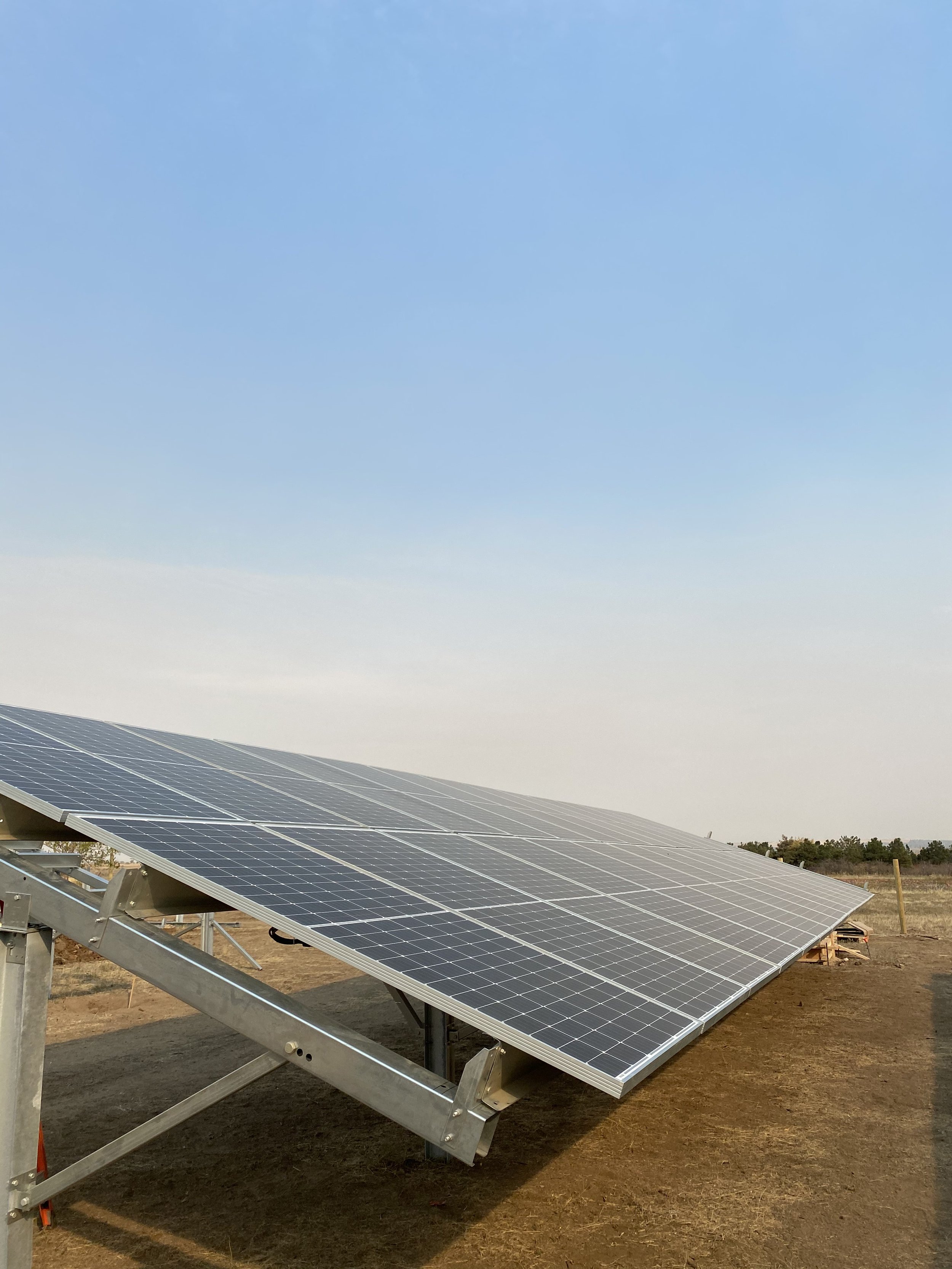
An Inclusive Clean Energy Economy Needs Catalytic Capital
Centering community-led development and ownership
Racist housing and industrial policies have forced communities of color onto the frontlines of the climate change crisis. Fossil fuel companies have long targeted Tribal lands, in particular, for energy extraction – exposing Indigenous communities to environmental threats while hoarding the profits.
Solving the climate crisis requires creativity, innovation, and leadership from environmental justice communities that have organized for decades to protect their families, friends, and neighbors and secure a just transition for future generations.

To spur systemic change in decarbonization and environmental justice, philanthropic investments in equitable climate change mitigation must increase drastically on a short timeline.
Clean energy like solar can reduce and stabilize utility costs – putting money back into families’ pockets, increasing housing affordability, and lowering financial burdens for community service providers.
Energy Resilience Fund loan fund provides ongoing support to community partners as they decide how to reduce electricity costs, increase climate resilience, and build capacity through solar education and workforce development.
Impact to date
16 low-cost bridge loans provided for multifamily affordable housing projects
$6.8 million in California cap and trade funding leveraged
28 job trainees received hands-on solar installation experience
$802,780 in annual savings each year for affordable housing providers and their residents
4,013,342 kwh of clean energy produced each year (same as preventing 15.7 railcars' worth of coal burned)
Triple Bottom Line Impact
-

People.
Ensure long-term energy and housing affordability
We provide affordable solar financing to create more energy cost savings for economic and environmental justice communities. Our projects reduce and stabilize energy costs – putting money back into families’ pockets and reducing operating costs for nonprofits and affordable housing providers so they can better serve their communities.
-

Planet.
Reduce emissions and increase climate resilience
Our long-term solar projects provide access to clean energy for decades. Your investments improve air quality and foster climate and environmental justice. Together we can accelerate the clean energy transition proving solar viability in all markets.
Small-scale solar, especially coupled with storage, can enhance resilience by allowing buildings or microgrids to power critical loads during grid outages (Solar Futures Study).
-

Employment.
Provide quality career and leadership pathways
Although direct employment at solar power generating facilities is low, each solar project is part of an ecosystem that supports many jobs in construction, operations and maintenance. These jobs typically pay a living wage, include benefits and are largely accessible to workers without a bachelor’s degree.
Increasing local solar and storage would lead to the creation of more than 1.2 million new American jobs by 2030 (Solar Futures Study).
Investment Options
Invest in a diversified portfolio of high impact clean energy projects.
Long Term Debt
0-2% interest
10-year term (monthly payments)
2-year investment period
Short Term Debt
0-1% interest
18-month term (repayment at maturity)
1-year investment period
Grants & Other Funding
Provide philanthropic support to operations and capacity building.
Grants usage:
Lending Capital
Loan Loss Reserve Capital
Operating Costs
CDFI and MF Affordable Housing Free Technical Assistance Initiative
2% grant included in all investments, supporting program development, fund administration, and management costs.
-

Impact at scale
An estimated 329 GW of potential solar capacity is ripe for investment in communities locked out of traditional markets – 60% of which is on renter-occupied or multifamily housing rooftops. Renewable energy is an essential solution to the climate crisis, as well as energy insecurity, housing affordability, and workforce exclusion. Despite its many benefits, upfront expenses to install and maintain solar systems are often out of reach.
-

Simplified Investing
We’ve simplified impact investing with a standardized process and customizable reporting to ensure mission fit and deliver verifiable results.
As a philanthropic investor, you now have the opportunity to effortlessly make impact investments like program-related investments (PRIs) and recoverable grants that meet your unique requirements.
-

Trusted Solar Nonprofit Partner
In the past 20 years, GRID Alternatives has completed more than 17,000 PV installations for low- to moderate-income rooftops, multifamily buildings, Tribal communities, and community solar projects amounting to over 71MWs – generating expected lifetime savings of $537 million and 277,309 job training hours.


